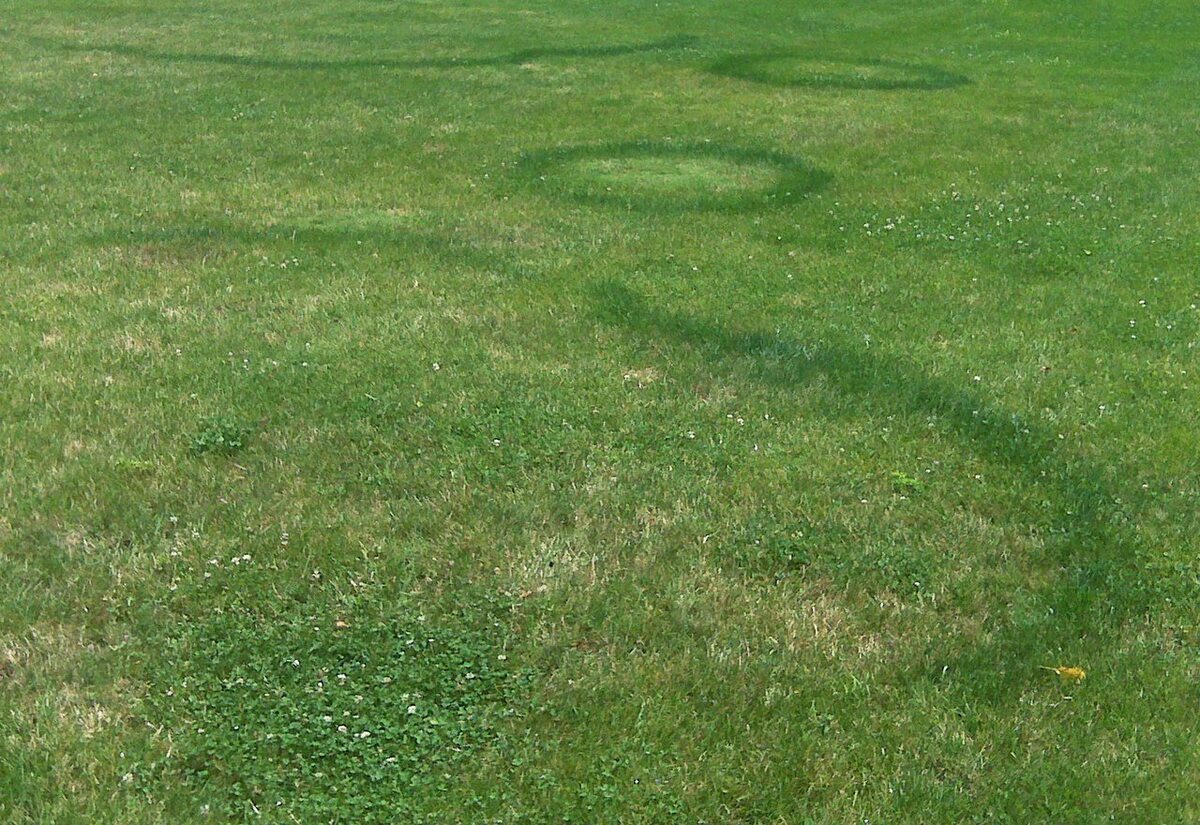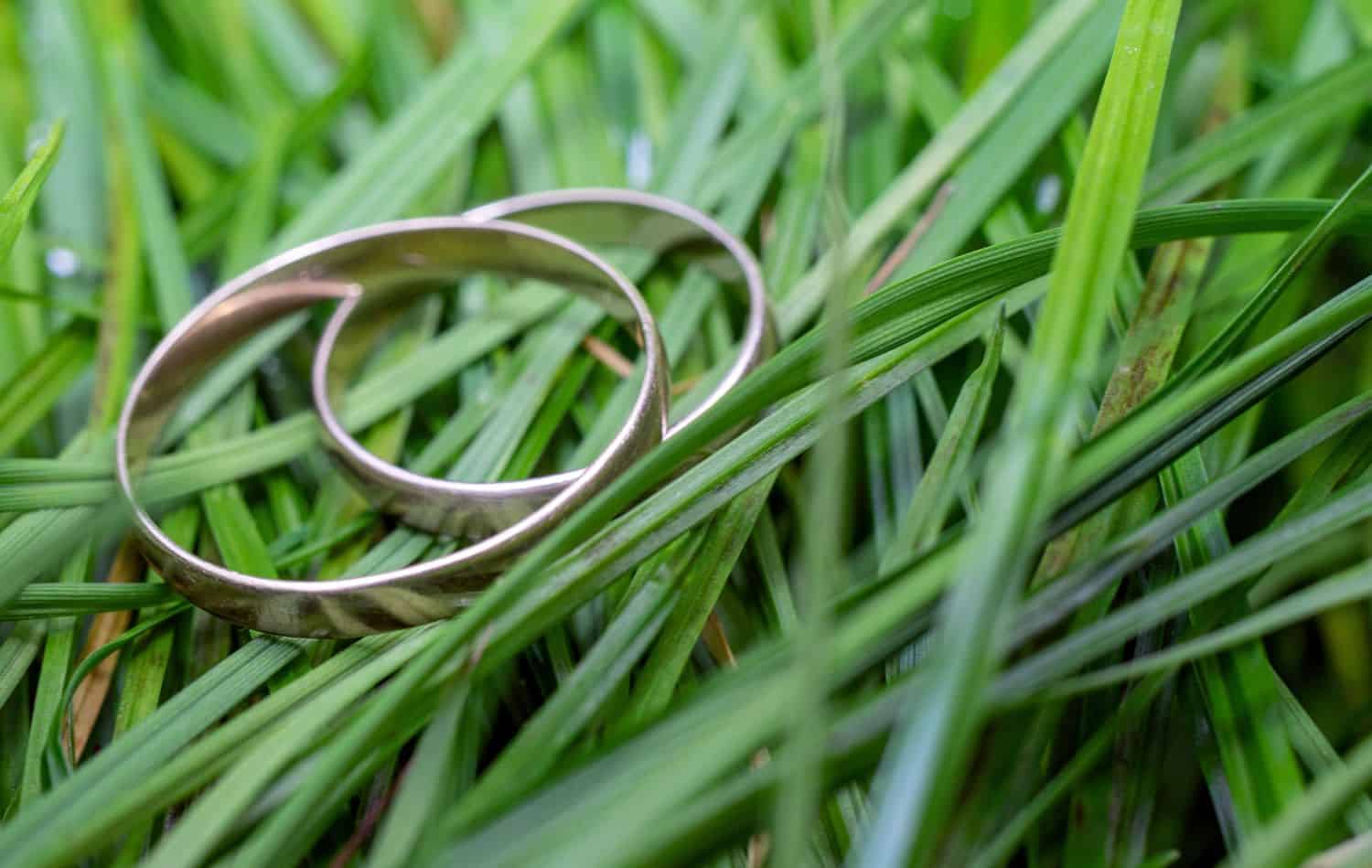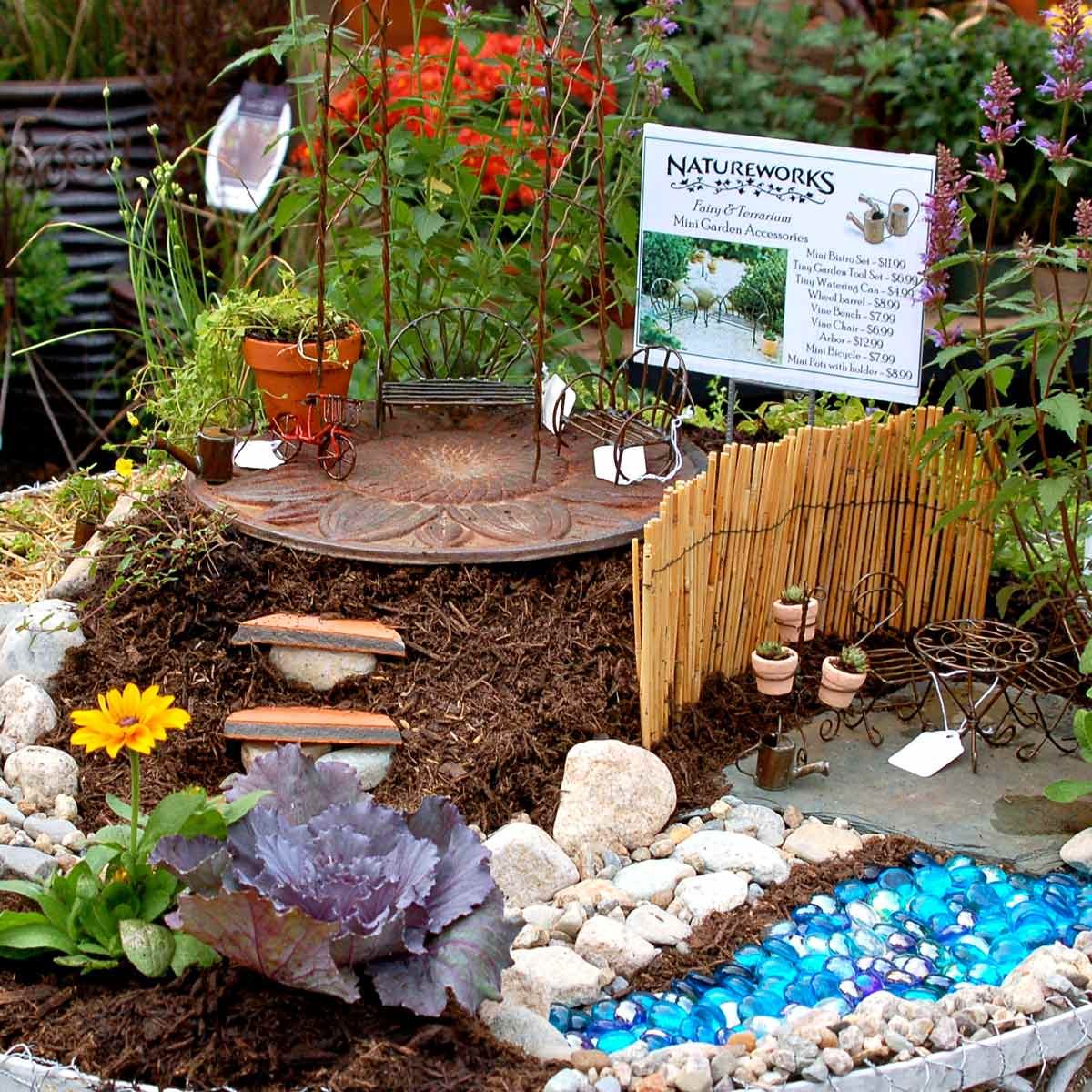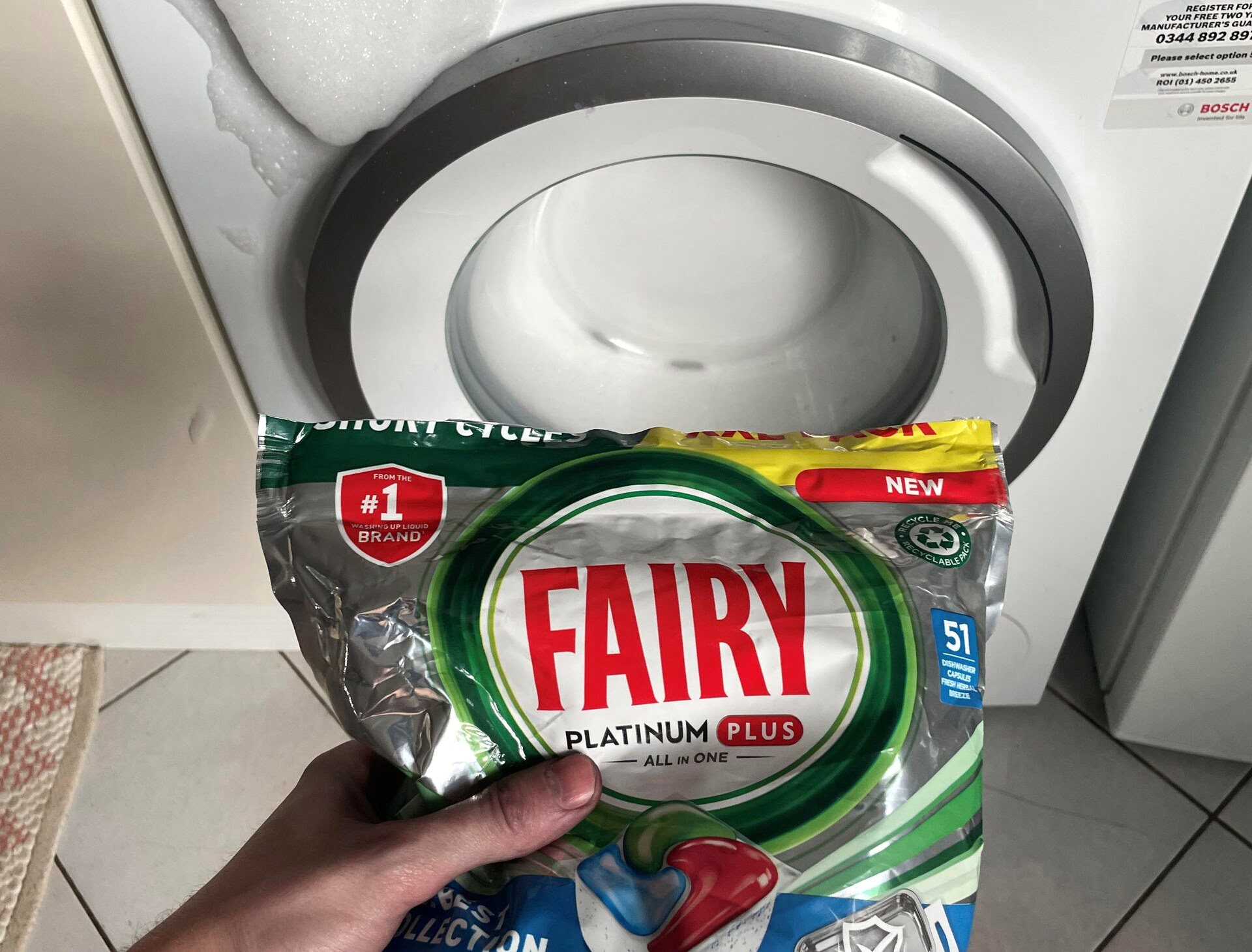Home>Gardening & Outdoor>Landscaping Ideas>What Is A Fairy Ring In Grass


Landscaping Ideas
What Is A Fairy Ring In Grass
Published: January 26, 2024
Discover the enchanting world of fairy rings in grass and how they can enhance your landscaping ideas. Learn about the folklore and practical tips for incorporating them into your outdoor space.
(Many of the links in this article redirect to a specific reviewed product. Your purchase of these products through affiliate links helps to generate commission for Storables.com, at no extra cost. Learn more)
Introduction
Fairy rings, also known as elf circles, are enchanting natural phenomena that captivate the imagination and curiosity of both nature enthusiasts and casual observers. These mysterious rings, often found in grassy areas, are characterized by a circular formation of lush, vibrant grass or mushrooms. The folklore surrounding fairy rings adds an element of mystique to these natural wonders, as they are often associated with magical creatures and otherworldly beings in various cultures and traditions.
The allure of fairy rings lies in their seemingly whimsical appearance, which has sparked countless myths and legends throughout history. These captivating formations have been the subject of folklore, inspiring tales of dancing fairies, protective spirits, and mystical portals to other realms. The enchanting imagery of these rings has permeated literature, art, and folklore, further adding to their mystique and allure.
Despite their magical associations, fairy rings are a product of natural processes and biological interactions within the soil and grass. Understanding the science behind these captivating formations can shed light on their origins and dispel some of the mysticism surrounding them. By delving into the mechanisms that give rise to fairy rings, we can gain a deeper appreciation for the intricate ecological processes at play and the impact they have on the surrounding landscape.
In this article, we will embark on a journey to unravel the mysteries of fairy rings, exploring their causes, types, and effects on grass and soil. Additionally, we will delve into strategies for controlling and preventing fairy rings, offering practical insights for maintaining the health and vitality of grassy areas. By shedding light on these captivating natural phenomena, we aim to foster a deeper understanding of fairy rings and their place in the intricate tapestry of the natural world.
Key Takeaways:
- Fairy rings are captivating circular formations of lush grass or mushrooms, rooted in natural processes and fungal interactions. They add wonder to landscapes and inspire myths and legends.
- To control and prevent fairy rings, aerate and dethatch the soil, manage nutrients, apply fungicides, modify the soil, and practice thorough watering. These strategies preserve the health and beauty of grassy areas.
Read more: How To Get Rid Of Fairy Rings In Lawns
What Causes a Fairy Ring?
Fairy rings are a fascinating natural occurrence with a complex set of causes rooted in the intricate interactions between soil, fungi, and organic matter. These captivating formations typically originate from the underground growth of certain fungi, particularly basidiomycetes, which thrive in organic-rich soil. The life cycle of these fungi plays a pivotal role in the formation of fairy rings, shaping their distinct circular patterns and influencing the surrounding vegetation.
The process begins with the growth of fungal mycelium, a network of thread-like structures that permeate the soil and organic matter. As the mycelium expands outward from a central point, it secretes enzymes that break down organic material, releasing nutrients that promote the lush growth of grass within the ring. This influx of nutrients creates a visible contrast between the vibrant grass inside the ring and the surrounding areas, where the soil lacks the same level of enrichment.
As the fungi continue to spread and consume organic matter, they deplete the available nutrients in the soil, leading to a gradual decline in grass health within the ring. This depletion creates a zone of dead or sparse grass, forming the characteristic outer ring that contrasts with the lush interior. The interplay between fungal activity, nutrient availability, and grass response gives rise to the distinct circular pattern that defines fairy rings.
In addition to nutrient dynamics, the fungal mycelium also plays a role in water repellency, affecting the soil's ability to absorb moisture. This hydrophobic effect can lead to the accumulation of water within the ring, further influencing the growth patterns of grass and other vegetation. The combined effects of nutrient enrichment, water dynamics, and fungal activity contribute to the formation and persistence of fairy rings, creating visually striking patterns that capture the imagination.
Understanding the intricate biological and ecological processes that underpin the formation of fairy rings provides valuable insights into the interconnectedness of soil, fungi, and plant life. By unraveling the complex web of interactions that give rise to these captivating formations, we can gain a deeper appreciation for the natural forces at play and the delicate balance that shapes the landscapes we encounter.
Types of Fairy Rings
Fairy rings exhibit remarkable diversity, manifesting in various forms and compositions that add to their allure and intrigue. These natural formations can be classified into distinct types based on their characteristics, including the presence of mushrooms, the arrangement of vegetation, and the overall visual impact they impart on the surrounding landscape. Exploring the different types of fairy rings provides a deeper understanding of their unique attributes and the ecological dynamics at play.
-
Mushroom-Associated Rings: One of the most iconic manifestations of fairy rings involves the presence of mushrooms, particularly species such as the iconic "fairy toadstools" or other fungi. These rings often feature a lush outer band of grass encircling a central zone where mushrooms emerge, creating a visually striking contrast between the vibrant vegetation and the fungal growth. The presence of mushrooms adds an enchanting dimension to these rings, evoking the whimsical imagery often associated with fairy folklore.
-
Grass-Only Rings: In contrast to mushroom-associated rings, some fairy rings consist solely of lush, vibrant grass arranged in a circular pattern. These rings showcase the captivating influence of nutrient dynamics and fungal activity on grass growth, resulting in a distinct circular band of vibrant vegetation. The absence of mushrooms in these formations highlights the profound impact of soil and fungal interactions on the visual manifestation of fairy rings.
-
Double Rings: Certain fairy rings exhibit a unique double-ring pattern, featuring two concentric circles of vegetation with a noticeable gap between them. This configuration adds an intriguing layer of complexity to the visual presentation of fairy rings, hinting at the intricate interplay of nutrient distribution, fungal activity, and soil dynamics. The presence of distinct inner and outer rings within these formations contributes to their enigmatic appeal and visual distinctiveness.
-
Sparse Rings: In some instances, fairy rings may manifest as areas of sparse or stunted vegetation, creating a ring-shaped zone of contrasting grass density. These sparse rings offer a glimpse into the nuanced effects of fungal activity and nutrient depletion on grass health, showcasing the intricate interplay between biological processes and visual patterns in the natural landscape.
By exploring the diverse types of fairy rings, we gain a deeper appreciation for the intricate variations and visual splendor these formations exhibit. Each type offers unique insights into the ecological processes and biological interactions that shape the appearance and dynamics of fairy rings, enriching our understanding of these captivating natural phenomena.
Impact on Grass and Soil
The presence of fairy rings exerts a multifaceted impact on both the grass and soil within their vicinity, influencing ecological dynamics and visual aesthetics in distinct ways. Understanding the ramifications of these formations on grass and soil sheds light on the intricate interplay of biological processes and environmental factors, offering valuable insights into the broader ecological implications of fairy rings.
Grass Health and Growth Patterns
Fairy rings can significantly influence the health and growth patterns of grass within their circular boundaries. The lush, vibrant vegetation that often characterizes the interior of the rings reflects the heightened nutrient availability resulting from fungal activity and organic matter decomposition. This nutrient enrichment fosters robust grass growth, creating a visually striking contrast between the lush interior and the surrounding areas.
Conversely, the outer ring of fairy rings often exhibits a decline in grass health, marked by sparse or stunted vegetation. This decline stems from the depletion of nutrients in the soil as the fungal mycelium consumes organic matter, leading to a gradual deterioration of grass health in the outer zone. The distinct contrast between the vibrant interior and the sparse exterior highlights the profound impact of nutrient dynamics and fungal activity on grass growth patterns.
Read more: What Is A Fairy Lamp
Soil Composition and Hydrological Effects
In addition to influencing grass health, fairy rings can alter the composition and hydrological characteristics of the soil in which they form. The activity of fungal mycelium within the rings can lead to changes in soil structure and nutrient distribution, shaping the overall composition of the soil matrix. Furthermore, the hydrophobic properties of the fungal mycelium can affect the soil's ability to absorb and retain moisture, influencing water dynamics within the ring.
The hydrophobic nature of the soil within fairy rings can lead to the accumulation of water, creating localized areas of excess moisture. This water accumulation can further impact grass and soil health, influencing the growth patterns of vegetation and contributing to the distinct visual delineation between the interior and exterior of the rings. The interplay between fungal activity, nutrient dynamics, and water accumulation underscores the intricate ecological effects of fairy rings on soil composition and hydrological processes.
Ecological Significance and Visual Appeal
Beyond their direct impact on grass and soil, fairy rings hold ecological significance and contribute to the visual appeal of natural landscapes. These formations serve as focal points for observing the interconnectedness of soil, fungi, and vegetation, offering insights into the complex web of biological interactions that shape terrestrial ecosystems. The visually striking patterns of lush vegetation and contrasting grass density within fairy rings add a captivating dimension to the natural landscape, evoking a sense of wonder and enchantment.
By examining the impact of fairy rings on grass and soil, we gain a deeper appreciation for the intricate ecological dynamics at play and the visual allure these formations impart on the natural world. The interwoven effects on grass health, soil composition, and visual aesthetics underscore the multifaceted nature of fairy rings, enriching our understanding of their role in shaping terrestrial ecosystems.
How to Control and Prevent Fairy Rings
Controlling and preventing fairy rings requires a multifaceted approach that addresses the underlying factors contributing to their formation. By implementing targeted strategies, it is possible to mitigate the impact of fairy rings and minimize their recurrence, preserving the health and aesthetics of grassy areas. Here are several effective methods for controlling and preventing fairy rings:
-
Aerating and Dethatching: Aerating the soil and dethatching the affected areas can help improve soil drainage and reduce the accumulation of excess moisture within fairy rings. By enhancing soil aeration and reducing compaction, these practices create a less favorable environment for the proliferation of fungal mycelium, thereby mitigating the conditions conducive to fairy ring formation.
-
Fertilization and Nutrient Management: Implementing a balanced fertilization regimen and managing nutrient levels in the soil can help counteract the nutrient imbalances that contribute to fairy ring development. By promoting healthy grass growth and addressing nutrient deficiencies, proper fertilization can minimize the visual impact of fairy rings and discourage their expansion.
-
Fungicide Application: In cases where fairy rings persist despite cultural practices, targeted fungicide application can be employed to suppress fungal activity and mitigate the formation of new rings. Selective fungicides designed to target the specific fungi responsible for fairy rings can be applied according to recommended guidelines, offering a targeted approach to control and prevent these formations.
-
Soil Modification: Modifying the soil composition through the addition of organic amendments or soil conditioners can help disrupt the conditions favorable to fairy ring development. By improving soil structure and nutrient availability, soil modification practices create a less hospitable environment for the proliferation of fungal mycelium, reducing the likelihood of fairy ring formation.
-
Thorough Watering Practices: Implementing consistent and thorough watering practices can help mitigate the hydrophobic effects associated with fairy rings, reducing the accumulation of excess moisture within the affected areas. By promoting uniform soil moisture levels and minimizing water accumulation, proper watering practices contribute to a less conducive environment for fairy ring development.
By integrating these strategies into a comprehensive management plan, property owners and landscape managers can effectively control and prevent fairy rings, preserving the health and visual appeal of grassy areas. Through proactive measures and targeted interventions, the impact of fairy rings can be minimized, allowing for the sustained vitality and beauty of the surrounding landscape.
Fairy rings in grass are caused by underground fungi, and they can indicate the presence of decaying organic matter. If you see one, avoid walking on or disturbing it to prevent damage to the fungi network.
Conclusion
In conclusion, fairy rings stand as captivating natural phenomena that intertwine folklore, ecology, and visual allure. These enchanting formations, characterized by circular patterns of lush grass or mushrooms, evoke a sense of wonder and mystique, drawing attention to the intricate biological interactions and ecological dynamics at play. By unraveling the mechanisms behind fairy ring formation, we gain valuable insights into the interconnectedness of soil, fungi, and vegetation, enriching our understanding of the natural world.
The diverse types of fairy rings, ranging from mushroom-associated formations to double rings and sparse configurations, showcase the nuanced variations and visual splendor these formations exhibit. Each type offers unique insights into the ecological processes and biological interactions that shape the appearance and dynamics of fairy rings, adding depth to our appreciation of these captivating natural wonders.
Furthermore, the impact of fairy rings on grass and soil underscores the multifaceted nature of these formations. From influencing grass health and growth patterns to altering soil composition and hydrological effects, fairy rings leave a lasting imprint on the landscapes they inhabit. Their ecological significance and visual appeal contribute to the rich tapestry of natural environments, serving as focal points for observing the delicate balance of terrestrial ecosystems.
In the realm of management and prevention, a multifaceted approach is essential for controlling and mitigating the impact of fairy rings. Through practices such as aerating and dethatching, fertilization and nutrient management, targeted fungicide application, soil modification, and thorough watering practices, property owners and landscape managers can effectively address fairy ring formations, preserving the health and aesthetics of grassy areas.
In essence, fairy rings encapsulate the enchanting intersection of science and folklore, offering a glimpse into the intricate web of biological interactions and ecological dynamics that shape the natural world. By delving into the mysteries of fairy rings, we uncover the beauty and complexity of these formations, enriching our connection to the captivating wonders that abound in the landscapes we inhabit.
Frequently Asked Questions about What Is A Fairy Ring In Grass
Was this page helpful?
At Storables.com, we guarantee accurate and reliable information. Our content, validated by Expert Board Contributors, is crafted following stringent Editorial Policies. We're committed to providing you with well-researched, expert-backed insights for all your informational needs.















0 thoughts on “What Is A Fairy Ring In Grass”